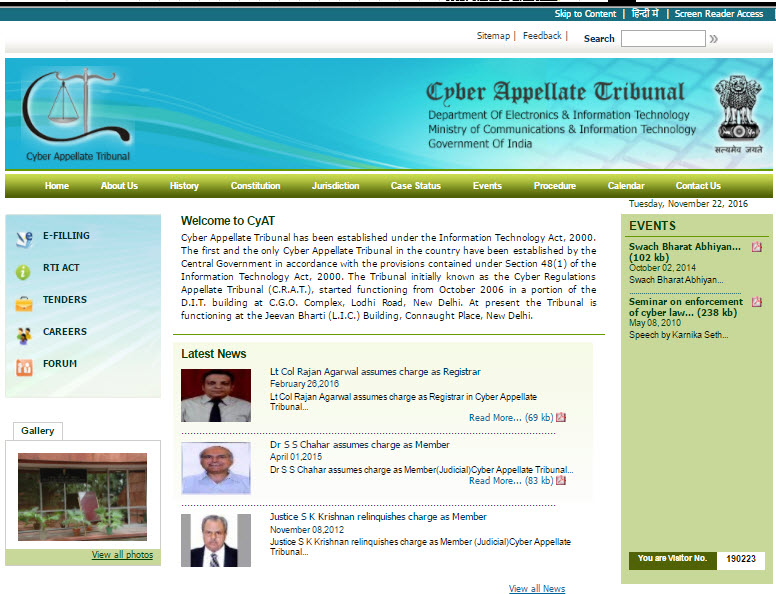For quite some time the RBI’s Banking Ombudsman Scheme has been defunct since the scope of the scheme has been interpreted by the Ombudsman as very limited. In most cases, Ombudsman have the habit of not only rejecting the complaints of the customers stating that “It requires elaborate examination of evidence”, they also bar an appeal against their decision. Many Ombudsmen are also biased in their approach and favour the Banks with decisions that completely frustrate the very existence of the scheme. Naavi.org has discussed the issues earlier and pointed out the problems. At present most of the customers have treated this scheme as of only a marginal use to the customers.
It now appears that some effort is being made to re-activate the scheme by expanding the scheme.
As per the amendments notified on June 16, 2017, the following changes have been notified:
- The Banking Ombudsman shall receive and consider complaints relating to the deficiencies in banking or other services filed on the grounds mentioned in clause 8 irrespective of the pecuniary value of the deficiency in service complained and facilitate their satisfaction or settlement by agreement or through conciliation and mediation between the bank concerned and the aggrieved parties or by passing an Award as per the provisions of the Scheme.
Comment: It may be noted that the undersigned had raised objection that Bank Ombudsman donot even care to organize a meeting between the customer and the Bank and simply dispose of the complaint based on a reply from the Bank which may be grossly insufficient from the point of view of the customer. Now it is clarified that the role of the Ombudsman is that of a “Facilitator” whose goal is to bring about a reconciliation and if necessary he should be a “Mediator” in achieving the settlement.
2. The type of complaints handled will include the following:
A) Non-adherence to the instructions of Reserve Bank on ATM / Debit Card and Prepaid Card operations in India by the bank or its subsidiaries on any of the following:
- Account debited but cash not dispensed by ATMs
- Account debited more than once for one withdrawal in ATMs or for POS transaction
- Less/Excess amount of cash dispensed by ATMs
- Debit in account without use of the card or details of the card
- Use of stolen/cloned cards
- Others
B) Non-adherence by the bank or its subsidiaries to the instructions of Reserve Bank on credit card operations on any of the following:
- Unsolicited calls for Add-on Cards, insurance for cards etc.
- Charging of Annual Fees on Cards issued free for life
- Wrong Billing/Wrong Debits
- Threatening calls/ inappropriate approach of recovery by recovery agents including non-observance of Reserve Bank guidelines on engagement of recovery agents
- Wrong reporting of credit information to Credit Information Bureau
- Delay or failure to review and correct the credit status on account of wrongly reported credit information to Credit Information Bureau
- Others
C. Non-adherence to the instructions of Reserve Bank with regard to Mobile Banking / Electronic Banking service in India by the bank on any of the following:
- delay or failure to effect online payment / Fund Transfer,
- unauthorized electronic payment / Fund Transfer,
Additionally, Non-adherence to Reserve Bank guidelines on para-banking activities like sale of insurance / mutual fund /other third party investment products by banks with regard to following:
- Improper, unsuitable sale of third party financial products
- non-transparency / lack of adequate transparency in sale
- non-disclosure of grievance redressal mechanism available
- delay or refusal to facilitate after sales service by banks
will also be grounds that the Ombudsman will consider.
It is further reiterated that
“For the purpose of promoting a settlement of the complaint, the Banking Ombudsman shall not be bound by any rules of evidence and may follow such procedure as he may consider just and proper, which shall, however, at the least, require the Banking Ombudsman to provide an opportunity to the complainant to furnish his/her submissions in writing along with documentary evidence within a time limit on the written submissions made by the bank.
Provided, where the Banking Ombudsman is of the opinion that the documentary evidence furnished and written submissions by both the parties are not conclusive enough to arrive at a decision, he may call for a meeting of bank or the concerned subsidiary and the complainant together to promote an amicable resolution.
Provided further that where such meeting is held and it results in a mutually acceptable resolution of the grievance, the proceedings of the meeting shall be documented and signed by the parties specifically stating that they are agreeable to the resolution and thereafter the Banking Ombudsman shall pass an order recording the fact of settlement annexing thereto the terms of the settlement.”
As regards the quantum of compensation, the following clarification has been provided:
“Notwithstanding anything contained in Sub-Clause (4), the Banking Ombudsman shall not have the power to pass an Award directing payment of an amount towards compensation which is more than the actual loss suffered by the complainant as a direct consequence of the act of omission or commission of the bank, or two million rupees whichever is lower. The compensation that can be awarded by the Banking Ombudsman shall be exclusive of the amount involved in the dispute.
The Banking Ombudsman may also award compensation in addition to the above but not exceeding Rs. 0.1 million to the complainant, taking into account the loss of the complainant’s time, expenses incurred by the complainant, harassment and mental agony suffered by the complainant.”
The The amended Scheme is available on the Reserve Bank’s website at :
https://www.rbi.org.in/commonman/English/Scripts/AgainstBank.aspx
The amendments are welcome and hopefully it will be implemented by the Ombudsmen in the spirit of assisting the aggrieved customer rather than simply protecting the interests of the Bank involved.
Naavi







